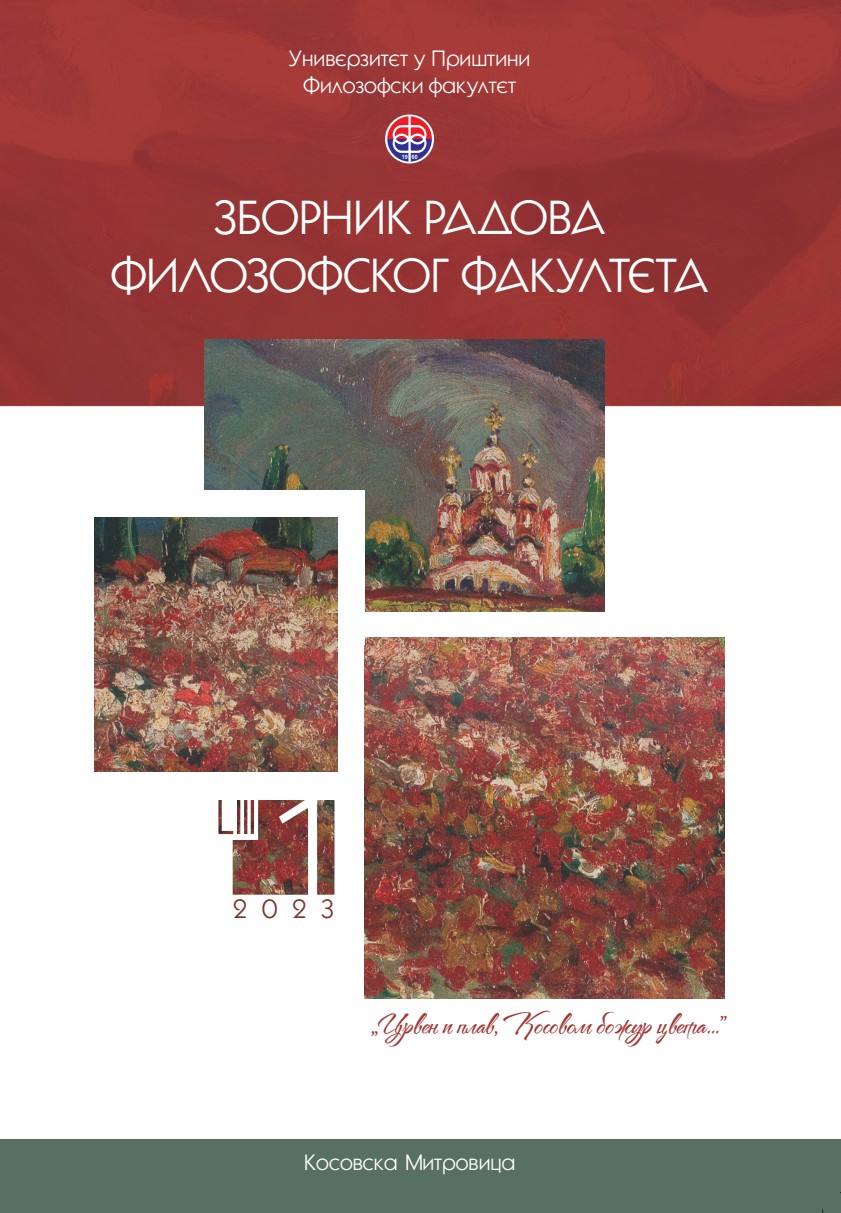Између изузетности и традиције: слике Сабора и Тајне вечере и посвета цркве у Сопоћанима
Between Exceptionalism and Tradition: Pictures of the Council and the Last Supper and the Dedication of the Church in Sopoćani
Author(s): Vesna D. MilanovićSubject(s): Fine Arts / Performing Arts, History of Art
Published by: Филозофски факултет, Универзитет у Приштини
Keywords: Sopoćani (narthex, church entrance); images of church councils; Last Supper; Pentecost; Holy Trinity; church’s dedication; thematic (iconographic) program.
Summary/Abstract: The paper examines a part of the iconographic program in the narthex of the representative church, endowed by the Serbian king Uroš I and dedicated to the Holy Trinity. With its layout, the program is linked to the central field of the wall above the entrance to the nave and bears the characteristics of the focal point of the corresponding whole. It includes a thematic segment with a group of representations that, based on today’s knowledge of painted material, can be classified as novelties and exceptional solutions. The cycle of Ecumenical Councils, with the attached depiction of a Serbian council, and the Last Supper, as the core of the group, are viewed from an angle from which they were not illuminated before. The unusual selection of scenes and the unique composition of the thematic group become clearer when one considers the scenes’ place on the line that connects three important ‘points’ of Sopoćani’s spatial and programmatic structure on the west-east axis. The ‘council wall’, with the Last Supper in its ‘heart’ communicates topographically, visually and semantically with the representation of Pentecost, which signalled the ‘identity of the holy place’ on the original ‘face’ of the building in Sopoćani (altered by later painting), at the entrance to the narthex. Moreover, the painted wall is in an equally multiple (topographical, visual, and semantic) correlation with the themes that mark the iconographic program in the sanctuary and around the opening leading into it. Apart from the repeated representation of the Pentecost, this time with a position on the wall field above the opening of the sanctuary apse, and apart from the typological representation of the Holy Trinity, situated in the eastern half of the south choir’s vault, the representations in the central part of the apse are particularly relevant for observations about the parallelism and special complementarity of the themes in the sanctuary and the narthex. This is a unity consisting of a ‘liturgical’ variant of the Last Supper (i.e., Communion of the Apostles) and two scenes of the Appearance of the Risen Christ to the Apostles, identified with the theme of the Sending out of the Apostles—all in the same register—as well as the composition of Officiating Church Fathers in the register below, which as their coevals also includes archbishops of the Serbian Church, positioned immediately below the rendering of the Apostolic Mission.The resulting findings of the present study is the existence of a special connection of the thematic repertoire with the dedication of the church and the reception of that connection as a kind of starting point in the process of envisaging and shaping a whole with a multi-layered meaning. As it appears, a conventional framework was consciously chosen and used as an ‘undercover’ for additional, daring allusions.
Journal: Зборник радова Филозофског факултета у Приштини
- Issue Year: 53/2023
- Issue No: 1
- Page Range: 275-308
- Page Count: 34
- Language: Serbian

